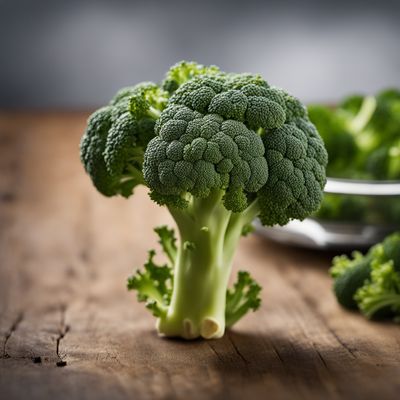
Ingredient
Wheatgrass
The Green Elixir
Wheatgrass is a nutrient-dense ingredient that is often consumed in the form of juice or powder due to its numerous health benefits. It has a vibrant green color and a slightly bitter taste, adding a refreshing element to various dishes and beverages.
Origins and history
Wheatgrass has been cultivated for centuries and is believed to have originated in ancient Egypt. It has been used in traditional medicine practices and is considered a sacred plant in some cultures. Today, it is widely grown and consumed for its nutritional properties.
Nutritional information
Wheatgrass is a nutritional powerhouse, packed with vitamins A, C, and E, as well as iron, calcium, and magnesium. It is low in calories and high in fiber, making it a great addition to a healthy diet.
Allergens
Wheatgrass is gluten-free, but individuals with grass allergies may experience allergic reactions. It is advisable to consult a healthcare professional before consuming wheatgrass if you have any known allergies or medical conditions.
How to select
When selecting wheatgrass, look for bright green blades that are free from yellowing or wilting. It should have a fresh, grassy aroma. If purchasing wheatgrass juice or powder, opt for reputable brands that use organic and high-quality sources.
Storage recommendations
To maintain the freshness of wheatgrass, store it in a sealed container or plastic bag in the refrigerator. It is best consumed within a week of purchase or harvest. If using wheatgrass juice or powder, follow the storage instructions provided by the manufacturer.
How to produce
Wheatgrass can be grown at home by planting wheatgrass seeds in a shallow tray filled with nutrient-rich soil. Regular watering and exposure to sunlight will promote its growth. Harvest the wheatgrass when it reaches a height of 6-8 inches for optimal nutritional content.
Preparation tips
Wheatgrass can be juiced, blended into smoothies, or used as a garnish for salads and soups. It can also be dried and ground into a powder for convenient use. When using wheatgrass, start with small quantities and gradually increase the amount to suit your taste preferences.
Substitutions
Spinach or kale can be used as substitutes for wheatgrass, although they may not provide the exact same nutritional benefits. They can be used in juices, smoothies, or salads to add a similar vibrant green color and earthy flavor.
Culinary uses
Wheatgrass is commonly used in juices, smoothies, and health shots. It can also be added to salads, soups, and stir-fries for an extra nutritional boost. In some cuisines, wheatgrass is used as a garnish or ingredient in traditional dishes.
Availability
Wheatgrass is widely available in health food stores, specialty grocery stores, and online retailers. It is commonly cultivated in regions with suitable climates, including North America, Europe, and parts of Asia.
More ingredients from this category » Browse all

Soyabeans sprouts
The Nutritional Powerhouse: Soybean Sprouts

Roman rocket sprouts
The Peppery Delight of Ancient Rome

Cresses
The Peppery Greens

Peas shoots and sprouts
The Green Delicacy

Ginger shoots
The Zesty Sprouts

Chinese chives sprouts
The Delicate Shoots of Chinese Chives

Daikon sprouts
The Delicate Daikon Sprouts

Other species used for the production of sprouts or shoots
Sprouting Delights

Broccoli sprouts
The Mighty Microgreens

Sunflower shoots and sprouts
Sunflower Shoots: A Burst of Freshness

Mung bean sprouts
The Crunchy Nutrient Powerhouse: Mung Bean Sprouts

Alfalfa sprouts
The Mighty Microgreens